RevPAR, or Revenue Per Available Room, stands as a crucial performance metric within the hotel industry, quantifying the income generated per available accommodation. This is calculated by dividing total room revenue by the number of available rooms. Understanding RevPAR is essential for hoteliers, as it encapsulates both occupancy and pricing strategies. Such insights empower hoteliers to manage finances more effectively and benchmark competitively against industry peers. By focusing on RevPAR, hotel owners can uncover opportunities for optimizing revenue, enhancing their operational strategies, and ultimately driving profitability.
Understanding the intricacies of hotel management hinges on one pivotal metric: Revenue Per Available Room, or RevPAR. This essential indicator not only reflects a hotel's financial performance but also serves as a benchmark for operational success in a fiercely competitive market.
As hoteliers strive to optimize their strategies, a pressing challenge emerges—how can they effectively enhance RevPAR while navigating the complexities of pricing, occupancy, and market demand?
This article delves into the definition, calculation methods, and significance of RevPAR, offering valuable insights for those seeking to elevate their hotel’s profitability and performance.
What is RevPAR in hotel operations refers to Revenue Per Available Accommodation, which serves as a crucial in the hotel sector, evaluating the income generated per available accommodation, regardless of occupancy. This metric is calculated by dividing total accommodation revenue by the total number of available units over a specific period.
Understanding what is RevPAR in hotel operations is essential for hoteliers as it reflects their ability to fill rooms at competitive rates and provides insight into overall financial performance.
Furthermore, to enhance revenue per available room, property owners can implement effective marketing strategies, such as:
By aligning these marketing initiatives with their performance objectives, hotels can not only boost occupancy rates but also refine their pricing strategies, ultimately leading to improved financial management and greater economic success.
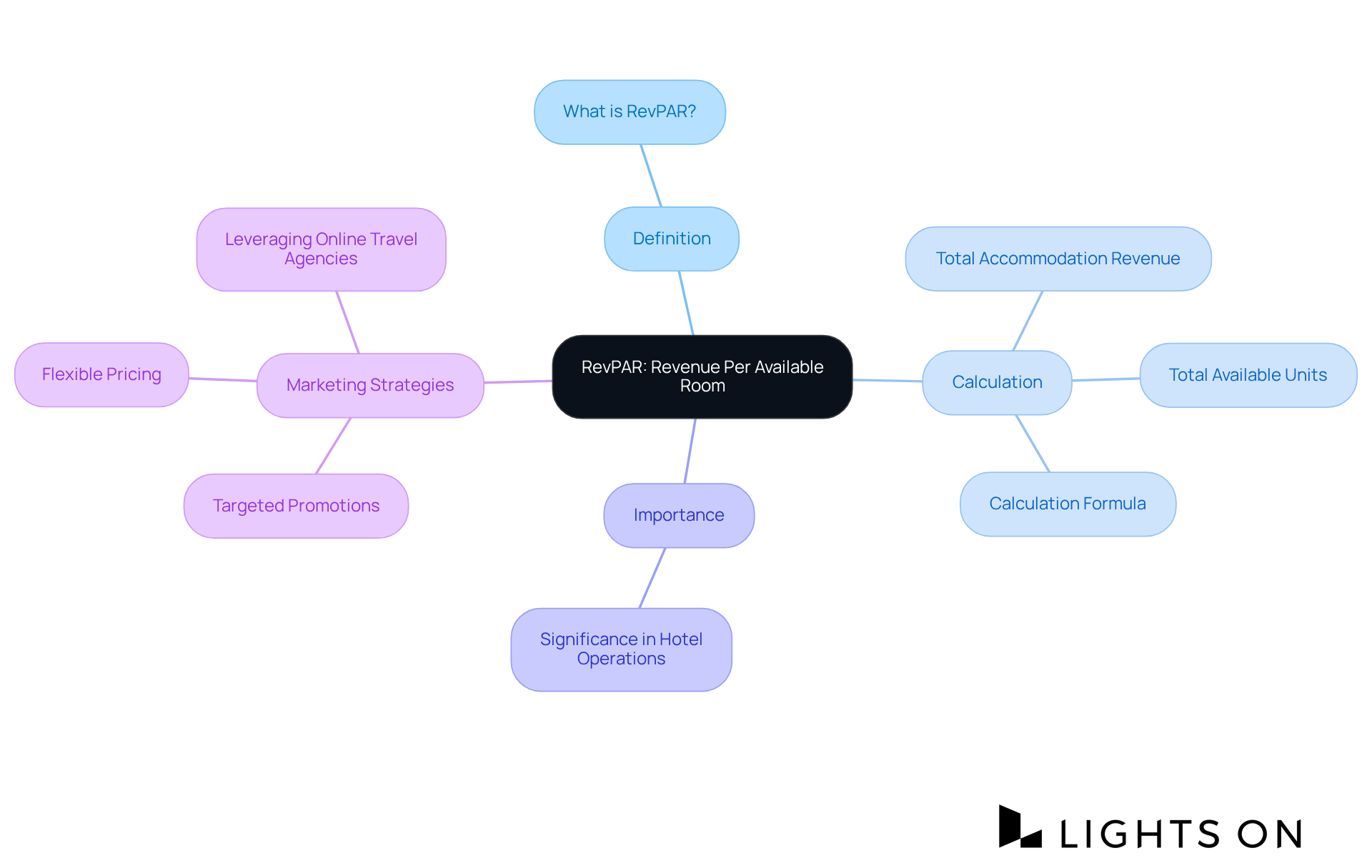
For hoteliers aiming to optimize their revenue strategies, understanding what is RevPAR in hotel is crucial. RevPAR can be calculated using two primary methods:
Total Accommodation Income Approach: This method involves dividing the total accommodation income by the total number of available accommodations. The formula is:
RevPAR = Total Room Revenue / Total Available Rooms
For instance, if a hotel generates $100,000 in room revenue and has 1,000 available room nights, the RevPAR would be $100.
Occupancy Rate Method: Alternatively, revenue per available room can be determined by multiplying the average daily rate (ADR) by the occupancy rate. The formula is:
RevPAR = ADR x Occupancy Rate
For example, if the ADR is $150 and the occupancy rate is 70%, the RevPAR would be $105. Both methods yield the same result, providing flexibility in how hoteliers can assess their performance.
Grasping these calculations is essential, as can significantly influence both occupancy rates and average daily rates, ultimately impacting revenue per available room. By boosting reservations through focused promotional strategies, establishments can enhance their financial management and overall monetary performance.
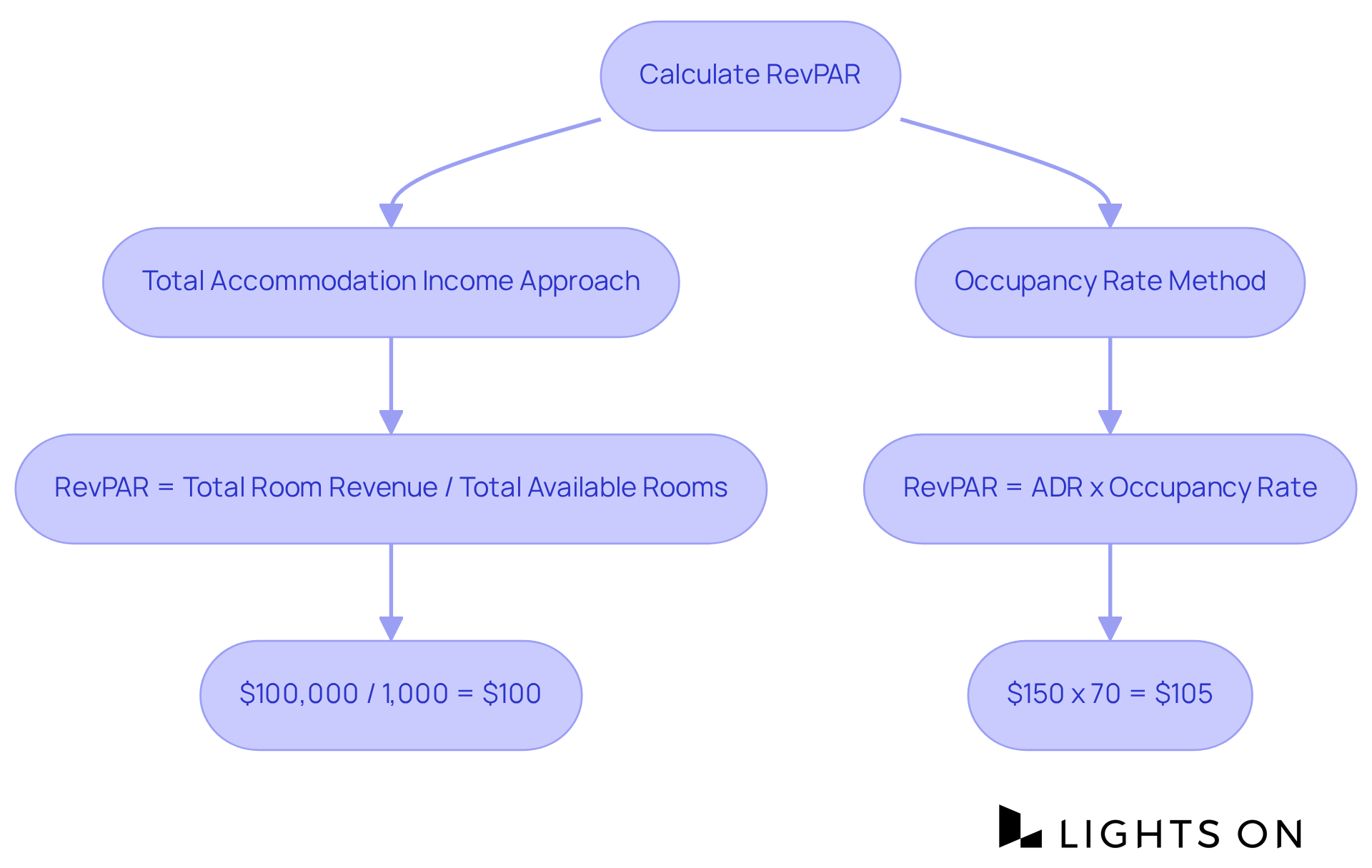
Understanding what is RevPAR in hotel management is essential for , as it offers critical insights into how effectively a lodging establishment generates income from its available units. An increase in revenue per available room, which is what is RevPAR in hotel, indicates that an establishment is achieving either higher occupancy levels, setting elevated room charges, or both. This metric, which explains what is RevPAR in hotel, is vital for benchmarking against competitors and assessing market position. Furthermore, understanding what is RevPAR in hotel enables accommodations managers to identify trends over time, facilitating informed decisions about pricing strategies, promotional activities, and operational adjustments.
By implementing effective lodging marketing strategies—such as targeted promotions and enhanced online visibility—operators can significantly increase what is RevPAR in hotel. Focusing on room income per available room not only enhances financial management practices but also elevates overall profitability. Therefore, it is crucial for hotel owners to understand what is RevPAR in hotel and prioritize this metric in their strategic planning, ensuring they remain competitive in a dynamic market.
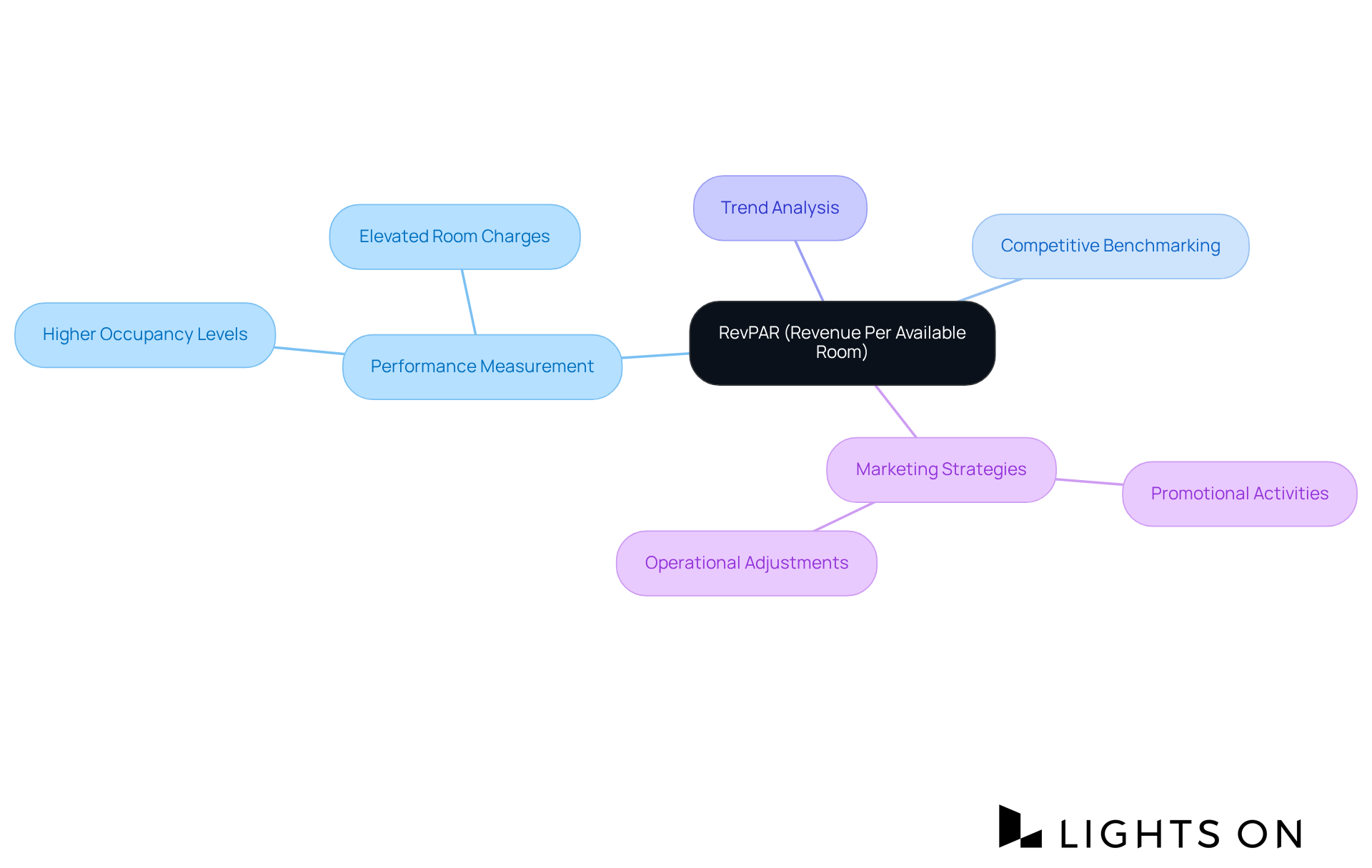
When calculating what is , hoteliers must recognize several common pitfalls that can undermine their accuracy.
Understanding these influences is crucial for precise analysis. By steering clear of these errors, hoteliers can ensure that their revenue per available room calculations accurately reflect performance and effectively guide strategic decisions.
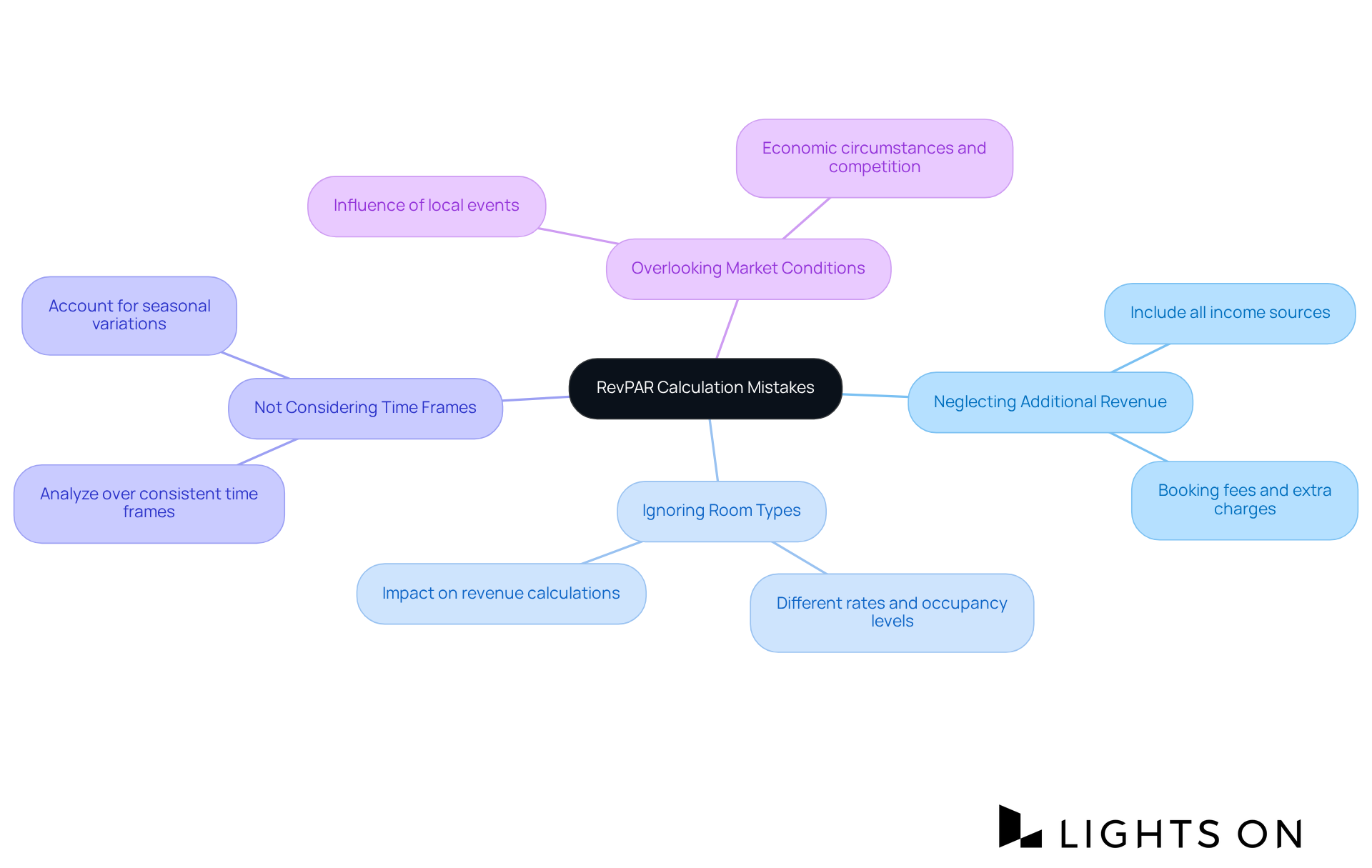
While what is in hotel operations is a crucial metric, it is not the only one that hoteliers should consider. Other important metrics include:
By employing a mix of these metrics in conjunction with room income per available room, hoteliers can achieve a broader insight into their operational efficiency and income potential. Furthermore, applying effective accommodation marketing strategies, such as targeted promotions and digital advertising campaigns, can greatly improve bookings and optimize revenue management. For instance, using data-driven marketing to tailor promotions based on occupancy rates can directly influence ADR and RevPAR, ensuring that hotels maximize their performance across all metrics.
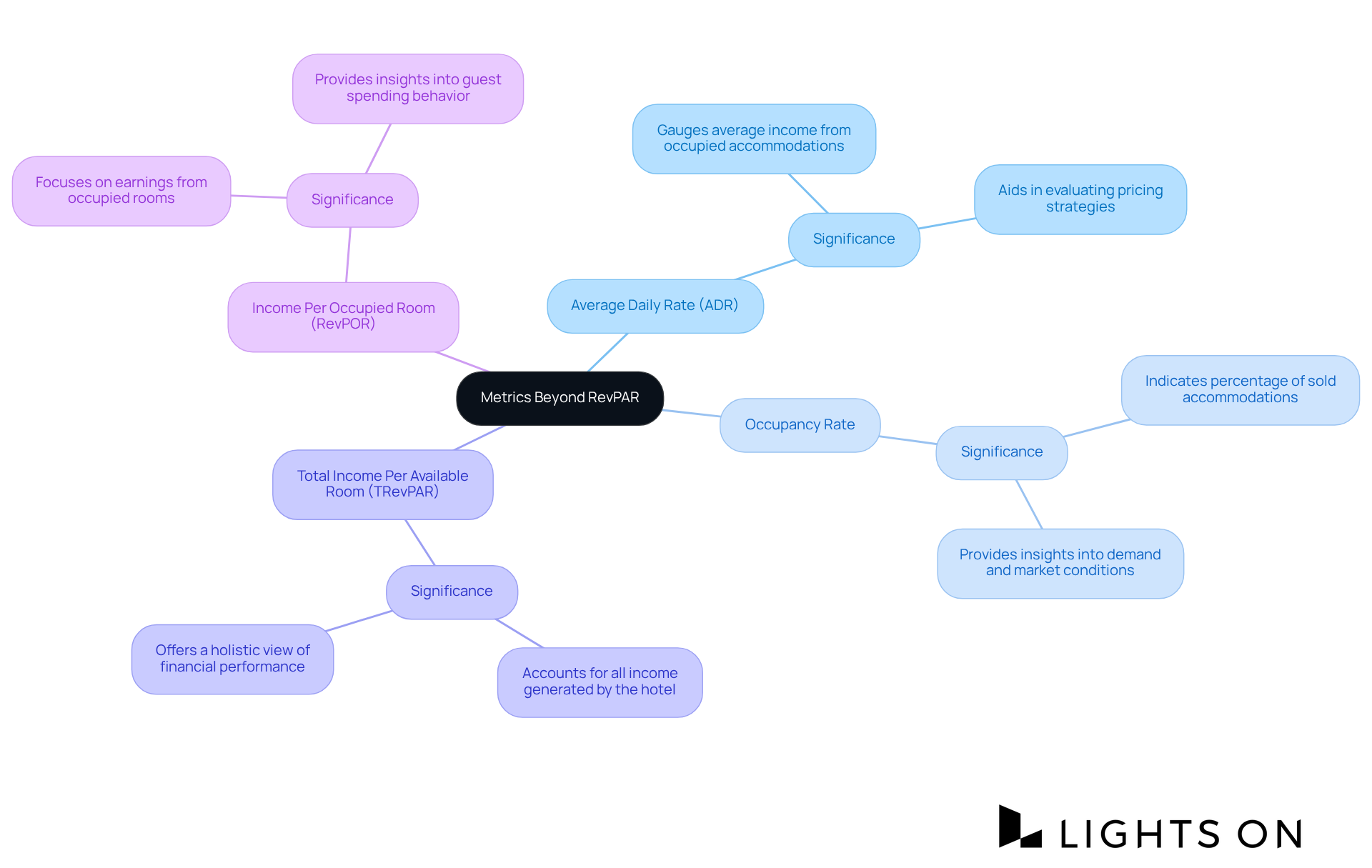
Understanding RevPAR, or Revenue Per Available Room, is crucial for hotel operators aiming to enhance their financial performance. This key metric not only reflects a hotel's effectiveness in generating income from its available accommodations but also serves as a benchmark for assessing market position and competitive standing. By concentrating on RevPAR, hoteliers can strategically align their pricing and marketing efforts to optimize occupancy rates and overall profitability.
Throughout this discussion, we have explored various aspects of RevPAR, including its calculation methods, significance in hotel management, and common pitfalls to avoid. The two primary methods for calculating RevPAR—the total accommodation income approach and the occupancy rate method—offer flexibility for hoteliers to assess their performance accurately. Moreover, the significance of RevPAR extends beyond mere numbers; it informs strategic decisions regarding pricing, promotional activities, and operational adjustments, ultimately leading to improved financial management.
In conclusion, the importance of RevPAR in the hospitality industry cannot be overstated. It serves as an essential tool for hotel owners and managers to navigate the complexities of revenue management and enhance their competitive edge. By integrating effective marketing strategies and being mindful of common calculation errors, hoteliers can significantly improve their RevPAR, ensuring sustained growth and success in a dynamic market. Embracing this metric and its broader implications fosters a deeper understanding of hotel performance and paves the way for informed decision-making that drives profitability.
What does RevPAR stand for in hotel operations?
RevPAR stands for Revenue Per Available Room, which is a key performance indicator in the hotel sector that evaluates the income generated per available accommodation, regardless of occupancy.
How is RevPAR calculated?
RevPAR can be calculated using two methods: 1. Total Accommodation Income Approach: RevPAR = Total Room Revenue / Total Available Rooms. 2. Occupancy Rate Method: RevPAR = Average Daily Rate (ADR) x Occupancy Rate.
Why is understanding RevPAR important for hoteliers?
Understanding RevPAR is essential for hoteliers as it reflects their ability to fill rooms at competitive rates and provides insight into their overall financial performance.
What marketing strategies can enhance RevPAR?
Property owners can enhance RevPAR through effective marketing strategies such as targeted promotions, flexible pricing, and leveraging online travel agencies.
Can you provide an example of how to calculate RevPAR?
For example, if a hotel generates $100,000 in room revenue and has 1,000 available room nights, the RevPAR would be calculated as $100 ($100,000 / 1,000). Alternatively, if the ADR is $150 and the occupancy rate is 70%, the RevPAR would be $105 ($150 x 0.70).
How do effective marketing strategies impact RevPAR?
Effective marketing strategies can significantly influence both occupancy rates and average daily rates, ultimately impacting revenue per available room and enhancing financial management and performance.
Transform your group booking strategies with Lights On and watch your occupancy soar.